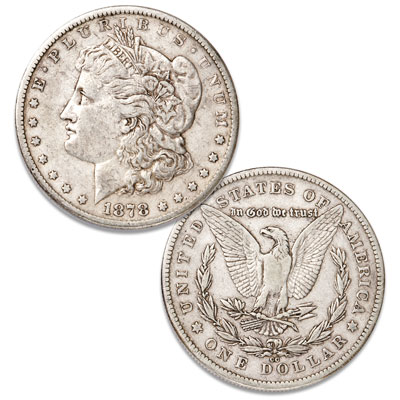The Morgan Dollar holds a special place in the hearts of coin collectors, being one of the most iconic coins in U.S. history. Minted from 1878 to 1904, and again in 1921, these silver dollars are not only prized for their beauty but also for their historical significance and collectible value. However, not all Morgan Dollars are created equal—some are exceedingly rare and can fetch significant prices at auction. This guide will help you identify rare Morgan Dollars, understand their key features, and determine what makes them so valuable.
A Brief History of the Morgan Dollar
Named after its designer, George T. Morgan, the Morgan Dollar was first introduced in 1878 following the passage of the Bland-Allison Act, which mandated the U.S. government to purchase large amounts of silver for coinage. The coin became one of the most recognizable pieces of currency in U.S. history, with production spanning multiple mints, including Philadelphia, New Orleans, San Francisco, Carson City, and briefly Denver (1921 only).
The Morgan Dollar was minted for circulation from 1878 to 1904, then again for a short time in 1921 before being replaced by the Peace Dollar. Although billions of Morgan Dollars were produced, only a fraction of those coins have survived in good condition today, and certain variations and mint marks make some examples highly sought after by collectors. Sometimes, even the smallest detail can greatly impact the rarity and value of a coin.
Key Features of the Morgan Dollar
To correctly identify a Morgan Dollar and assess its rarity, it’s important to understand its basic features. Each Morgan Dollar is made from 90% silver and 10% copper, weighing 26.73 grams with a diameter of 38.1 millimeters. The obverse (front) features a profile of Lady Liberty wearing a Phrygian cap, while the reverse (back) shows an eagle with outstretched wings holding arrows and an olive branch.
Beyond these general characteristics, it’s the smaller details that can make a particular Morgan Dollar rare and valuable. These include the date, mint mark, and certain design variations that occurred over the years. Some common design variations have to do with the number of feathers on the eagle, how the dates were stamped (overdates), and several other factors. Below we’ll go over everything you need to know!
Understanding Mint Marks and Their Impact on Value
One of the most important aspects of identifying a rare Morgan Dollar is locating its mint mark. The mint mark can be found on the reverse of the coin, just above the “DO” in “DOLLAR.” This tells us at which US Mint location the coin originated from. There are five main mint marks to look for:
- No Mint Mark (Philadelphia): Morgan Dollars minted in Philadelphia do not bear a mint mark, but certain years and conditions of these coins can still be rare and valuable.
- O (New Orleans): Coins minted in New Orleans can be relatively common, but some years, like 1893 and 1895, are exceptions and hold significant value.
- S (San Francisco): San Francisco Mint coins, particularly those in excellent condition, can be highly desirable among collectors.
- D (Denver): The Morgan Dollar was only minted in Denver in 1921. It is one of the most common coins available today, since they were minted in such high numbers this year.
- CC (Carson City): Coins minted in Carson City are among the most coveted. These Morgan Dollars were produced in limited quantities and are always in high demand.
Carson City Morgan Dollars, especially those from the early 1880s, are famous for their rarity. For example, the 1889-CC Morgan Dollar is one of the most sought-after coins, with very few surviving in uncirculated condition. Coins from the 1895 that were minted in Philadelphia are also incredibly rare, as only proof coins were made that year in Philadelphia, with no official records of circulation/business strikes.
How Condition Affects a Morgan Dollar’s Value
In addition to the mint mark, a Morgan Dollar’s condition is a crucial factor in determining its value. Coins are graded on a scale from 1 to 70, with 70 being a perfect, brilliantly uncirculated coin. Most Morgan Dollars found today show varying degrees of wear, which lowers their grade—and thus their value. However, Morgan Dollars in mint state (MS) condition, especially those graded MS65 or higher, can command premium prices, particularly when combined with a rare date or mint mark.
Even more common dates of Morgan Dollars can become highly valuable in higher grades. For example, an 1881-S Morgan Dollar is relatively common and can still be purchased easily today. However, if the coin is in MS67 or MS68 condition, its value can skyrocket due to its rarity in such pristine form. Many collectors seek out the highest quality coins they can find, and with a limited number of coins that exist in this high of a grade, many people compete over a limited supply.
Varieties and Errors in Morgan Dollars
Certain varieties and minting errors can also make a Morgan Dollar particularly rare. These include doubled dies, overdates, and other production anomalies that were unintentional but create highly collectible pieces. One famous example is the 1900-O/CC Morgan Dollar, where a Carson City mint mark was repurposed with an overstrike of the New Orleans mint mark. This error adds substantial value to an otherwise common 1900-O Morgan Dollar.
Another valuable variety is the 1878 8TF (Tail Feathers) Morgan Dollar, which was an early design that was quickly modified, making surviving examples more desirable to collectors.
Tips for Collectors: How to Spot Rare Morgan Dollars
When hunting for rare Morgan Dollars, it’s important to educate yourself on the various dates, mint marks, and varieties that command higher prices. Here are some tips to help you get started:
- Research Key Dates: Dates like 1889-CC, 1893-S, and 1895-P are key dates to look out for, as these are some of the most valuable and rare Morgan Dollars.
- Examine the Mint Mark: Always check the reverse of the coin for the mint mark. Carson City coins are particularly valuable, but other mints like San Francisco can also produce rare examples.
- Check the Coin’s Condition: A well-preserved, uncirculated Morgan Dollar can be worth significantly more than a worn example. Learn how to assess a coin’s grade or consult a professional grading service.
- Look for Varieties and Errors: Special varieties like overdates or mint errors can greatly enhance the value of a Morgan Dollar. Be sure to look closely at details that might indicate these rarities.
- Get a Coin Appraisal: If you believe you have a rare Morgan Dollar, it’s worth getting it appraised by a professional or submitting it to a coin grading service to get an official grade and authentication.
Conclusion: Why Morgan Dollars Remain Highly Collectible
The Morgan Dollar is a staple of any serious coin collection, and with their rich history, stunning design, and rarity, it’s no wonder they continue to capture the attention of collectors around the world. Whether you’re new to the hobby or an experienced collector, knowing how to identify rare Morgan Dollars and understanding what makes them valuable is key to building a remarkable collection.

